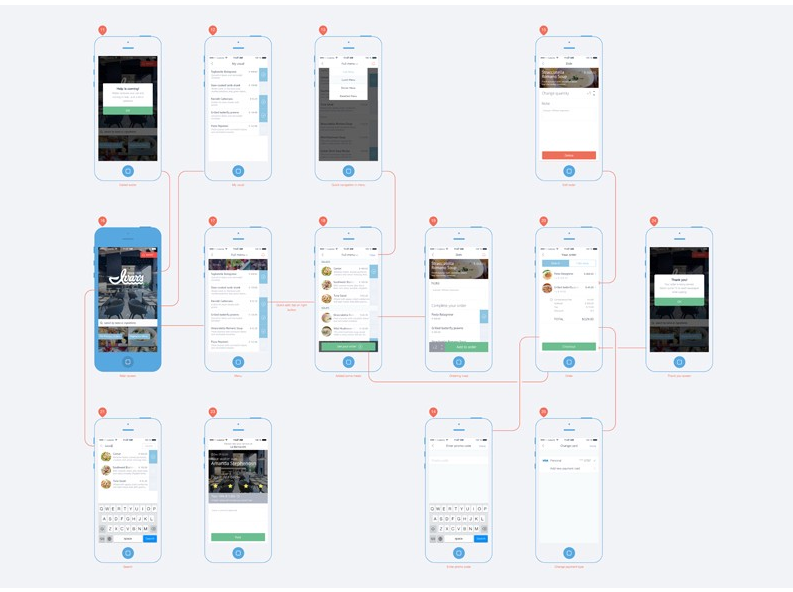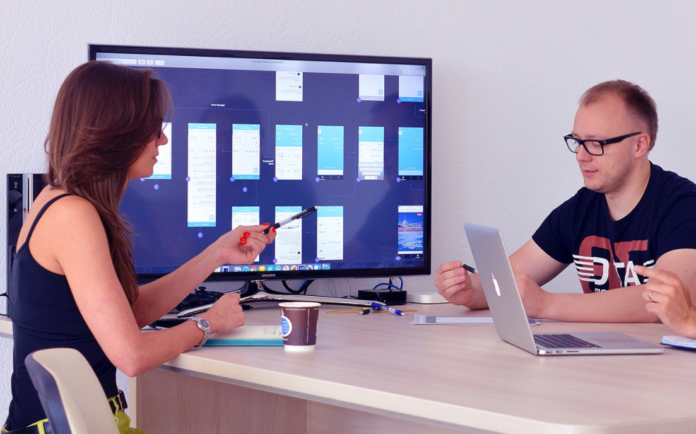The costs associated with app development concerns not only startups, but also those production studios whose internal business processes are still in their fledgling stages. In this article we’ll talk about:
- The developing costs for a mid-level complexity application, and what it depends on;
- How to determine cost price;
- Which team to involve to ensure successful project completion;
- Breaking development down into stages, and other useful facts.
The Digital Creatice Agency Cuberto has been building mobile apps for 7 years and from the very first project kickoff, they’ve kept track of every endeavor’s labor costs. Their extensive experience equips them to reliably calculate mobile app development budgets which include operational expenses like staff, taxes, rent, and company profit.
Emergent production studios lack the expertise to realistically envision fully building an app, how much it will cost, and which team members they the project requires. Typically, even a potential client who’s planning to hire a development team will have very vague ideas of what’s supposed to happen next. So, when the client sends a request to several studios, the prices can vary widely. The spectrum can run from $20,000 to $150,000 for 3–4 month development of a mid-level complexity app. Actually, the general app building cycle spans 3–4 months at our company, too and it accordances to Kinvey’s stats. These price ranges obviously depend also on which countries made the client’s short list. An unbiased salary comparison among different countries is impossible without taking into account costs of living, taxation details, and lots of other nuances. Let’s do a quick breakdown of a complete product development lifecycle to get a better grasp of the work amount assigned to a development team.
Mobile app development stages
Research, analytics, and wireframing. Usually clients approach an agency with a brief of the mobile app’s conceptual components. At this point, the agency helps the client finalize a list of functions, prepare technical tasks, and create a prototype with well thought out interactivity logic (UX). Here’s how that looks in at Cuberto:

Design, style, and brCanding. Let’s be honest: Some companies don’t have a talented and experienced art director, so they argue that design is an uncontrollable process which drags on until they’ve screwed up every deadline. Sure, design may be cosmetic, but that doesn’t mean you can just write it off, saying nobody needs pretty pictures. Design and development aren’t mutually exclusive, and should work together to achieve exceptional results and nail deadlines.
Back-end development. Sometime in the middle of the design stage, it’s a good idea to dive into backend programming with pre-arranged technical references consistent with the app’s logic. Back-end development should get a head start on front-end by a couple of weeks.
Front-end development. As soon as agancy and client agree on a design, the agency kicks off front-end development. The whole process is broken down into sprints and carefully monitored for timely completion.
Quality assurance. The development lifecycle should always be accompanied by testing. For clarity, we’re separating the testing stage from the others, but everything should be tested, from beginning to end.
Setting up the project team
Now that we’ve unpacked the main development stages, what kind of team should you build to release a high-quality product in 3-4 months?
Key players: Analyst, UX & Visual designer, Technical writer, 2 mobile devs, 2 backend devs, 2 quality assurance testers, Web developer, just in case the app has administrative part, Project manager, Art director and a CTO.
Cuberto preps its projects for rain or shine by dedicating two developers. After all, the contract lasts 3–4 months and anything can happen in the interval, either with your own company or with your client. Be prepared in case one of your developers gets sick, quits, or takes off for vacation. If you’ve assigned just one dev, there’s no way to avoid timeline pitfalls. Or let’s say a bigger issue crops up and demands more time than the current sprint budgets for. If one team member is slogging through the unforeseen, then all the other tasks and sprints are thrown off. A second developer acts as insurance. Even better if they divvy up all the tasks from the get-go.
Here’s how the stages look in numbers:
1. Analytics and User Experience – 5 days
2. Design – 15 days
3. Front-end – 40 days
4. Back-end – 40 days
5. QA – 20 days
Grand total: 70 days if you manage to stack stages into parallel timelines.

Budgeting for mobile apps
When it comes to expenses, ideally, you’ll be moving step by step and keeping risks (and the drain on your client’s wallet) to a minimum, since with a ready-made map of the application and technical references, you should be able to pinpoint realistic financial projections. Unfortunately, step by step progress isn’t always possible when clients expect a fixed budget. In these cases, only the company’s sound experience can project a reliable estimate that’s not too high or too low. Let’s take a look at a case when a studio like Cuperto that’s been around for a while, boasts a rich and varied portfolio, and the necessary team members for any project, gets a request to develop a messenger app, which should take 70 working days.
An average salary for a specialist in a London design studio starts at $4,000. A project’s dedicated team averages 10-12 people. Not all team members will be working full-time. Your team will feel maximum pressure on the second month, when the development department kicks in but you still need an analyst and designer. A strong knowledge of all the development processes and heaps of experience can help put together an estimate for a client, where you can point out labor costs for each stage. All in all, for a project like a messenger app, the numbers will look like this:
1. Analytics and user experience – $2,300
2. Design – $5,000
3. Fron-tend – $20,000
4. Back-end – $22,500
5. QA – $6,500
Grand total: $56,300. In essence, that’s the cost price. But you’ve got to consider risks, taxes, rent, and interest. Then we get an approximate budget of $84,000, for which a company like Cuperto can aim a stellar project without bugs or delays for release in Apple Store or Google Play.
Conclusion
We examined only one case, but any project requires thorough prep-time at the pre-sale stage. Project estimates can take several days and should involve the CTO, art director, sales manager, and other team members whose expertise can help sketch an accurate vision of the product. So don’t rush anything, even if the client is insisting on a quote ASAP. An erroneous quote can result in a big financial hit for you, especially after the client gives you the go-ahead and you sign your name. Reaching into your own pocket to finish development, or terminating a contract with losses, is a huge buzzkill.
Editor’s Note: This post was created in collaboration with Cuberto.




